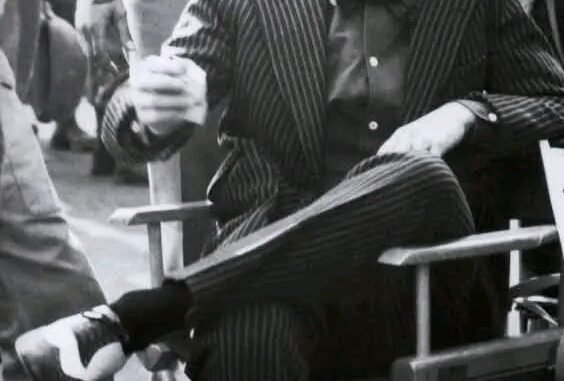
John Lennon’s influence on the music world was not just confined to his songwriting and musical innovation—his personal style was also an integral part of his public persona. As a leading figure in the countercultural movement of the 1960s, Lennon’s fashion choices were a reflection of his growing commitment to peace, love, and individuality. In particular, the influence of hippie fashion played a key role in shaping his stage presence and public image during his solo career.
By the late 1960s, as The Beatles began to evolve into more experimental and politically charged artists, Lennon started to embrace the ethos of the hippie movement. Hippie fashion was characterized by its rejection of conventional styles and its embrace of more relaxed, bohemian aesthetics. The style, which was often a mix of vibrant colors, loose-fitting clothing, and ethnic influences, mirrored the ideals of peace and freedom that defined the counterculture. Lennon, ever the trendsetter, began to incorporate these elements into his wardrobe, signaling his personal transformation.
One of the most famous sartorial choices that Lennon embraced was the use of round glasses, which became one of his signature looks. These glasses, which he often wore both on and off stage, were a symbol of his intellectual, introspective side. They were in stark contrast to the more traditional rock star image that had been prevalent in the early days of The Beatles. Lennon’s glasses became an essential part of his identity, contributing to his image as a deep thinker and peace activist.
Lennon’s hippie-inspired style also extended to his stage performances. During his solo years, particularly in the early 1970s, he often wore simple, loose-fitting clothing like bell-bottom jeans, tunics, and shirts adorned with peace symbols or abstract patterns. These choices were a clear reflection of his desire to distance himself from the commercialized rock star image and embrace a more authentic, anti-establishment persona. His fashion choices allowed him to connect more deeply with his audience, especially the youth of the 1960s and 1970s, who were drawn to the ideals of peace, love, and social change.
In his iconic Imagine music video, Lennon’s wardrobe—a white suit and casual clothing—reinforced his desire for simplicity and purity in both his music and his personal life. The fashion choices in the Imagine video, set against the backdrop of his New York City apartment, further emphasized his message of peace and hope. His style was no longer just about looking good—it was a visual representation of his message of unity and the power of imagination.
Lennon’s hippie-inspired fashion choices were not just a reflection of the times; they were an essential part of his identity as an artist and activist. His style was about more than just clothing—it was a statement about who he was and what he believed in. It helped solidify his status as a cultural icon and a symbol of the counterculture movement that defined an entire generation.
John Lennon’s influence on the music world was not just confined to his songwriting and musical innovation—his personal style was also an integral part of his public persona. As a leading figure in the countercultural movement of the 1960s, Lennon’s fashion choices were a reflection of his growing commitment to peace, love, and individuality. In particular, the influence of hippie fashion played a key role in shaping his stage presence and public image during his solo career.
By the late 1960s, as The Beatles began to evolve into more experimental and politically charged artists, Lennon started to embrace the ethos of the hippie movement. Hippie fashion was characterized by its rejection of conventional styles and its embrace of more relaxed, bohemian aesthetics. The style, which was often a mix of vibrant colors, loose-fitting clothing, and ethnic influences, mirrored the ideals of peace and freedom that defined the counterculture. Lennon, ever the trendsetter, began to incorporate these elements into his wardrobe, signaling his personal transformation.
One of the most famous sartorial choices that Lennon embraced was the use of round glasses, which became one of his signature looks. These glasses, which he often wore both on and off stage, were a symbol of his intellectual, introspective side. They were in stark contrast to the more traditional rock star image that had been prevalent in the early days of The Beatles. Lennon’s glasses became an essential part of his identity, contributing to his image as a deep thinker and peace activist.
Lennon’s hippie-inspired style also extended to his stage performances. During his solo years, particularly in the early 1970s, he often wore simple, loose-fitting clothing like bell-bottom jeans, tunics, and shirts adorned with peace symbols or abstract patterns. These choices were a clear reflection of his desire to distance himself from the commercialized rock star image and embrace a more authentic, anti-establishment persona. His fashion choices allowed him to connect more deeply with his audience, especially the youth of the 1960s and 1970s, who were drawn to the ideals of peace, love, and social change.
In his iconic Imagine music video, Lennon’s wardrobe—a white suit and casual clothing—reinforced his desire for simplicity and purity in both his music and his personal life. The fashion choices in the Imagine video, set against the backdrop of his New York City apartment, further emphasized his message of peace and hope. His style was no longer just about looking good—it was a visual representation of his message of unity and the power of imagination.
Lennon’s hippie-inspired fashion choices were not just a reflection of the times; they were an essential part of his identity as an artist and activist. His style was about more than just clothing—it was a statement about who he was and what he believed in. It helped solidify his status as a cultural icon and a symbol of the counterculture movement that defined an entire generation.
Leave a Reply